
Update: 10/20/2022
Create a shared document with notes, comments, questions on the readings, title it DMT II, put it in the shared folder for class (and email me) prior to our meeting to discuss these materials.
You might think feminism has absolutely nothing to do with maps and mapping. Hah!
“Feminist Data Visualization” by Catherine D’Ignazio and Lauren F. Klein is a precursor to the book published in 2020 called Data Feminism. We will read and discuss the former, but I’ll include some details from the latter below. Also, look at “Can Feminist Robots Challenge Our Biases?”Feminist Data Visualization” PDF here.Data Feminism book information here. Ponder these questions, google stuff: examples are always good: put some notes on your lab blog
- What are Feminist Science and Technology Studies? (Fornara)
- What is Feminist Human-Computer Interaction? (Vandervelde)
- What is Digital Humanities and what is Feminist Digital Humanities? (Rancher)
- Where does Critical Cartography & GIS (which we have discussed) fit into this all? (Kline)
- Principles of Feminist Data Visualization: think up or find examples that fit the principles
- What does it mean to Rethink Binaries? Examples in mapping and GIS? (Fellenstein)
- What does it mean to Embrace Pluralism? Examples in mapping and GIS? (Levin)
- What does it mean to Examine Power and Aspire to Empowerment? Examples in mapping and GIS? (Kelly)
- What does it mean to Consider Context? Examples in mapping and GIS? (Singh)
- What does it mean to Legitimize Embodiment and Affect? Examples in mapping and GIS? (Lewis)
- What does it mean to Make Labor Visible? Examples in mapping and GIS? (Bruni)
- Is this approach helpful, and how? What are the potential long-term impacts of these kinds of concepts and ideas on mapping and GIS, and society in general? (everyone)
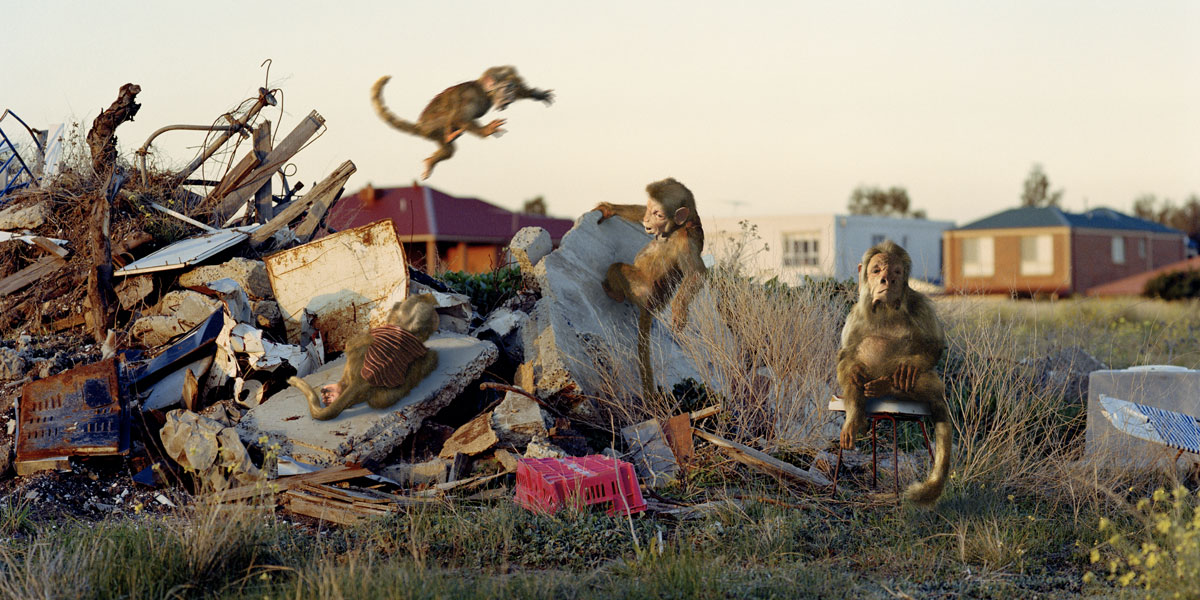
| Donna Haraway, Primate Visions (1989): Successive ideas and paradigms in primate research (on topics like parenting, behavior, sex, resource use, and warfare) have tended to reflect the historical social concerns and anxieties of the period of their investigation, and were often imbued with sexist, racist, and colonial discourses.”(image source) | 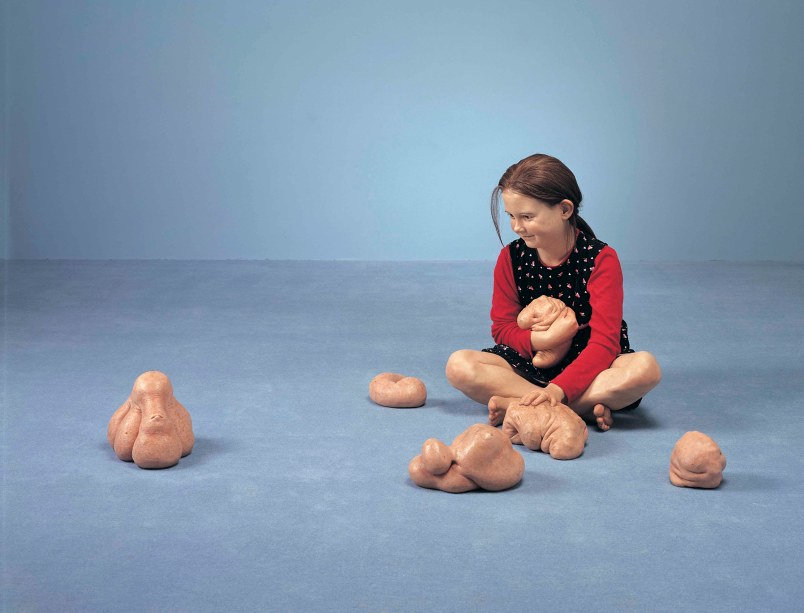 |
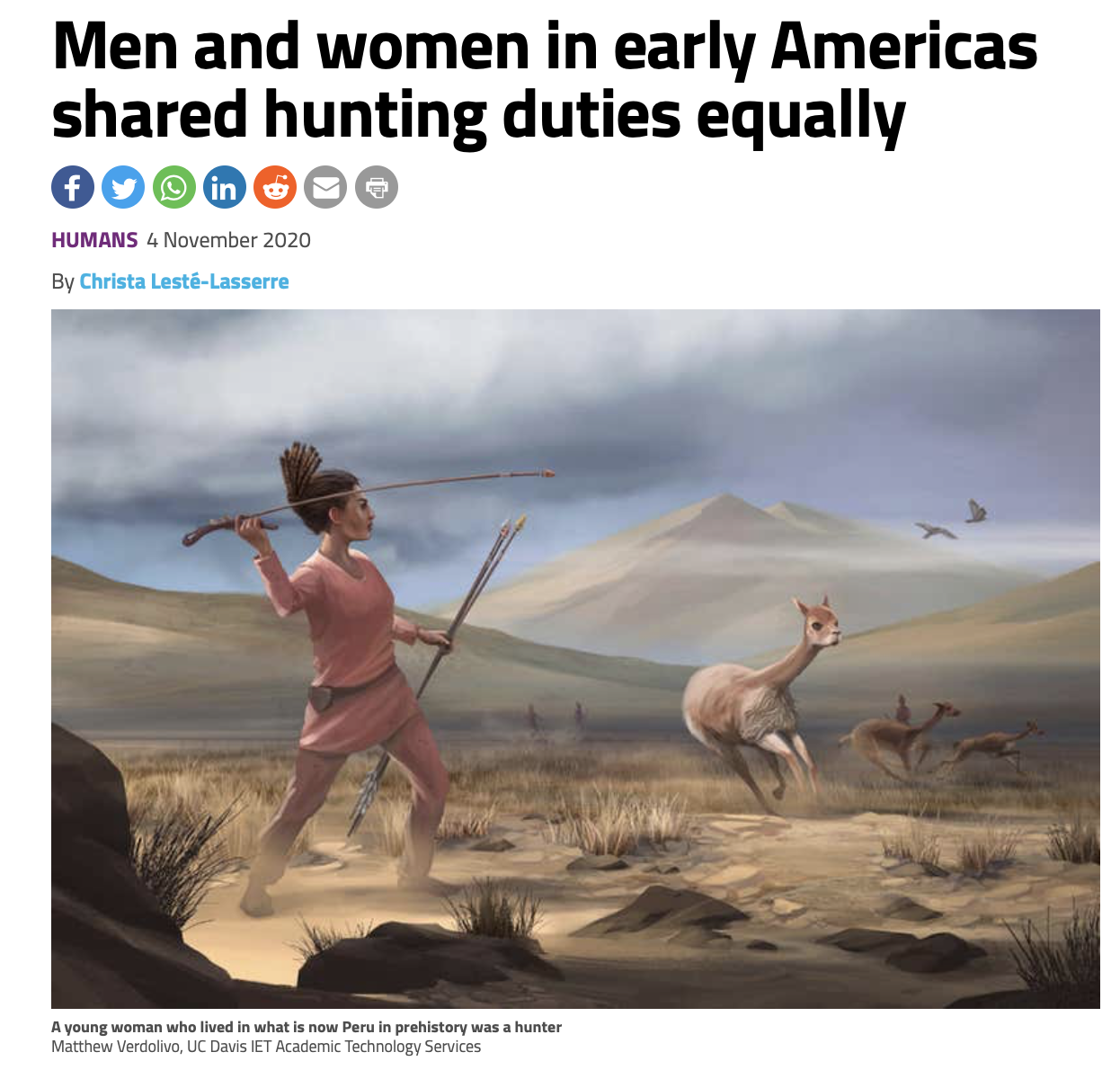
|
A young woman buried with stone tools including spearheads 9000 years ago in what is now Peru probably hunted animals including deer. The finding may help overturn long-standing assumptions about gender roles in ancient hunter-gatherer communities in the Americas. Within present-day hunter-gatherer communities across North and South America, women makeup at least one-third of the hunting force, and possibly as much as half, says Randy Haas at the University of California, Davis. However, although archaeological investigations over the past century have also found hunting tools in the graves of prehistoric women throughout the Americas, Haas says it took the unearthing of a young woman’s bones in the Andes mountains for scientists to set aside their unconscious biases about gender roles and recognize what they were seeing.“There is sexist ideology in Western culture that may have slowed our ability to recognize females as hunters in the past,” says Haas, adding that he himself was “surprised, unfortunately” by his discovery.“Even some of the most forward-thinking feminist scholars had accepted it to be true [that women weren’t usually hunters],” he says. Read more: https://www.newscientist.com/article/2258985-men-and-women-in-early-americas-shared-hunting-duties-equally/#ixzz6dFHFn6yP |
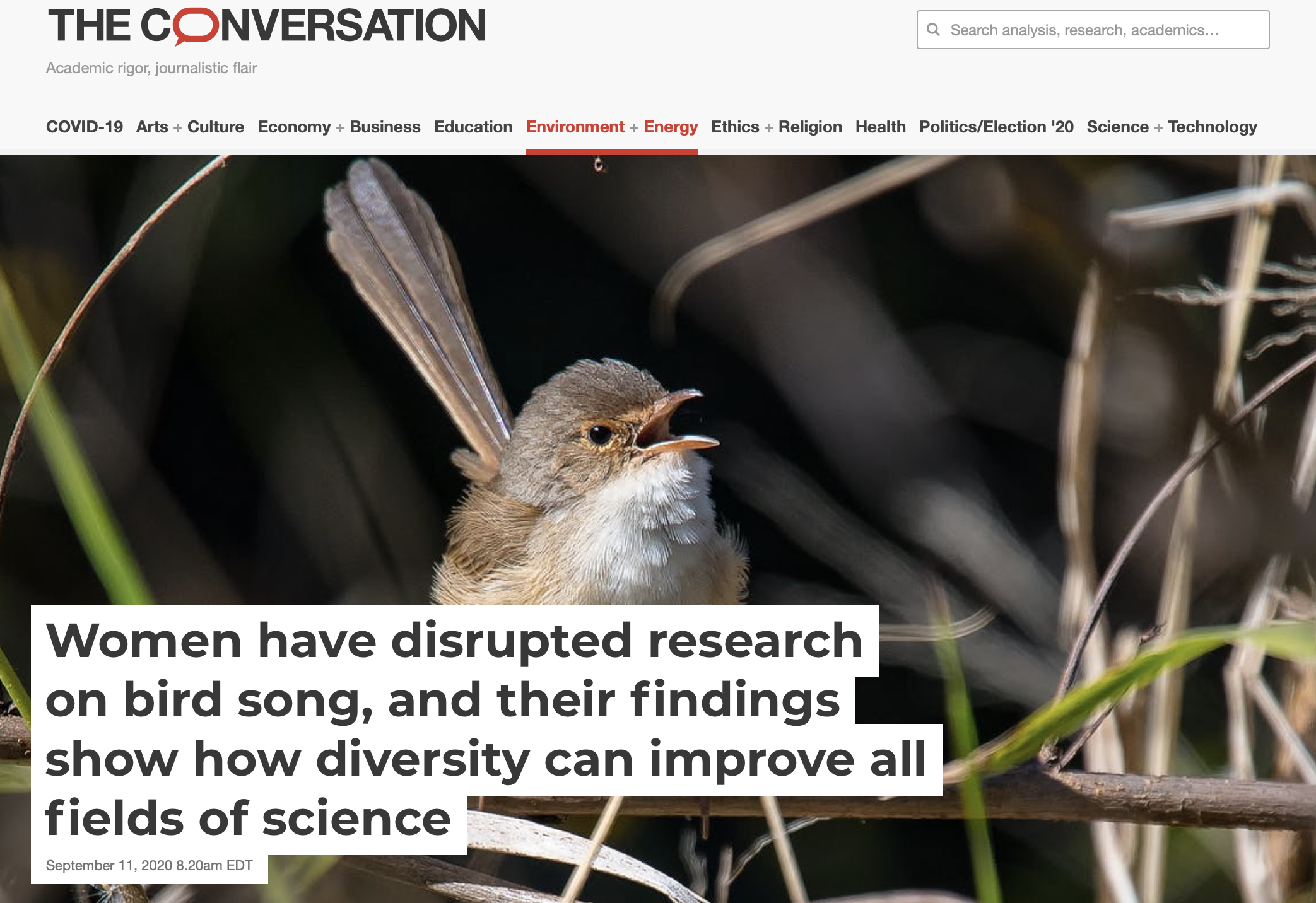 |
Americans often idealize scientists as unbiased, objective observers. But scientists are affected by conscious and unconscious biases for more than 150 years, dating back at least to Charles Darwin’s writings on sexual selection, scientists have generally considered bird song to be a male trait. But over the past 20 years, research has shown that both males and females in many bird species sing. Recent findings have shown that female song is widespread, and it is likely that the ancestor of all songbirds had female song. In a recently published study, we reviewed 20 years of research on female bird song and found that the key people driving this recent paradigm shift were women. Source |
Krygier’s Notes and ThoughtsCollections to look at…
- This is Not an Atlas Maps
- CounterCartographiesCollective
- Data Feminism book and site
- Makingmaps.net
- Countermap Collection (cached)
- Scholarly sources that cite the article
- Contrast between “revealing” and “insight” and even “discovery” vs. a more situated approach to knowledge, knowledge construction and understanding
- Is data discovered or created?
 (source)
(source)
- Is data discovered or created?
- feminist theory “encompasses a range of ideas about how identity is constructed, how power is assigned, and how knowledge is generated, as well as how a range of intersectional forces [19] such as race, class, and ability, combine to influence the experience of being in the world.”
- identity
- power
- knowledge
- intersectionality
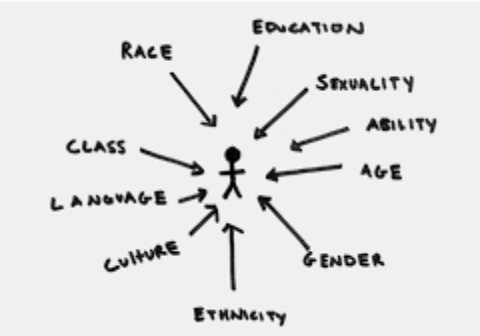 (source)
(source)
- Goal: ” to encourage the development of a range of alternative visualization practices that better emphasize the design decisions associated with data and its visual display.”
- “Exposing the assumptions involved in choices about data type, categorization schema, visual typology, interaction mode, and intended audience; as well as those associated with the qualitative aspects of visualization design and its reception, such as the composition and structure of the design team, the identification and involvement of user communities, the contextual and affective factors that influence both the design and reception of visualizations, and the many forms of labor that contribute to a successful visualization design.”
“Dear Data: Feminist Information Design’s Resistance to Self-Quantification.” Miriam Kienle, Feminist Studies, Vol. 45, No. 1 (2019), pp. 129-158.
Every Sunday for one year, information designers Giorgia Lupi and Stefanie Posavec sent each other a hand-drawn postcard that featured a data visualization of their week as it pertained to a single aspect of their daily lives: doors opened, clocks checks, sounds heard, smells perceived, and so on. With this series of postcards exchanged between Brooklyn and London, Lupi and Posavec gained intimate knowledge of one another through their small/slow data, and at the same time, they produced a critical examination of the capture, interpretation, and visualization of their daily data from a uniquely feminist perspective.
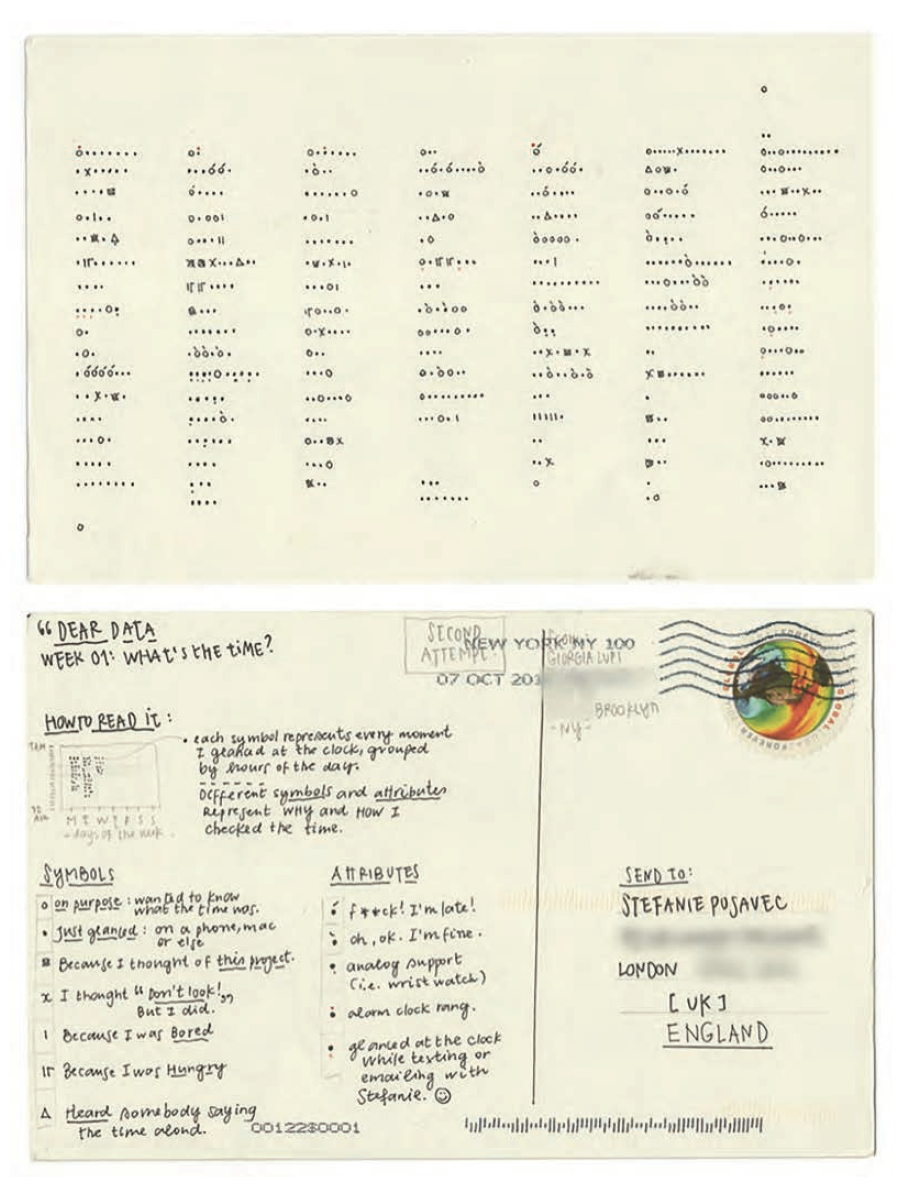 |
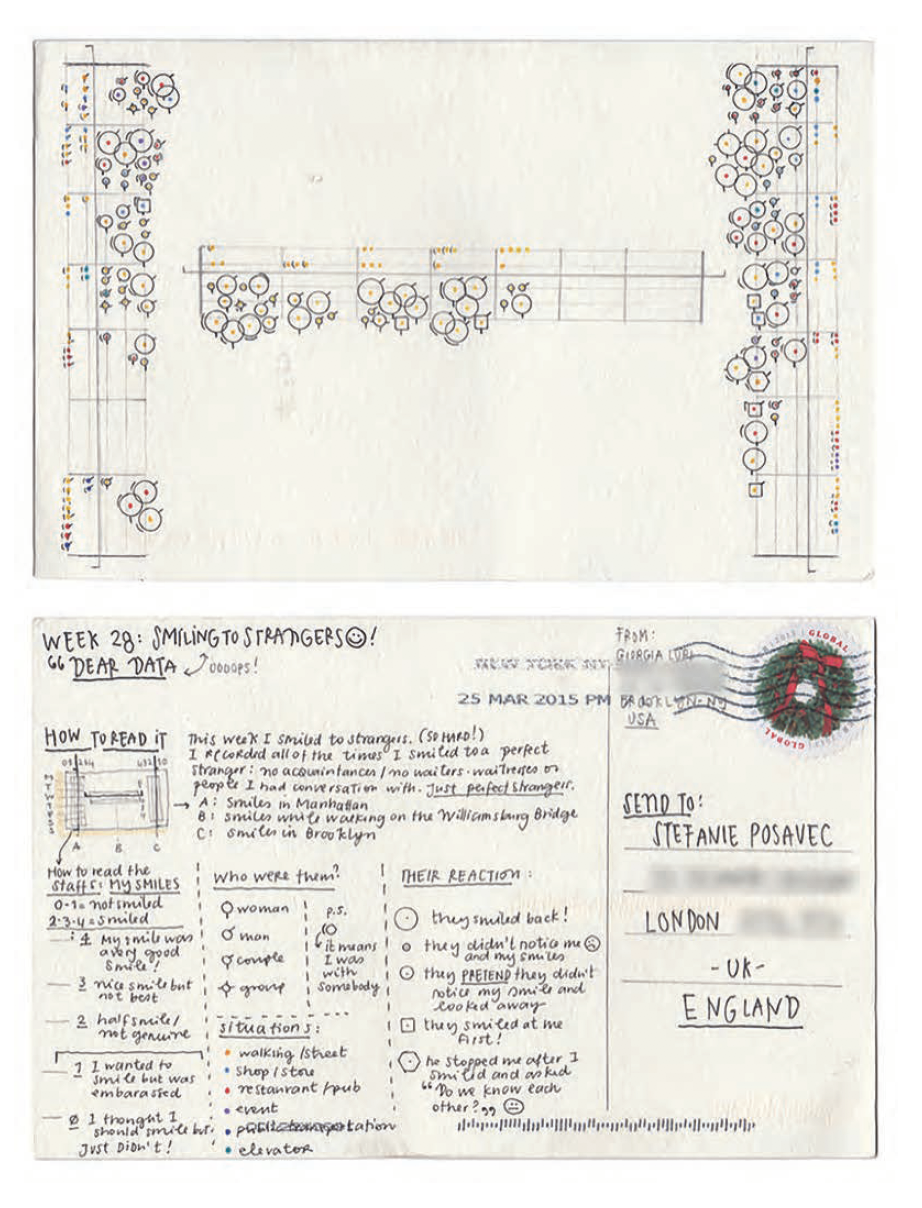 |
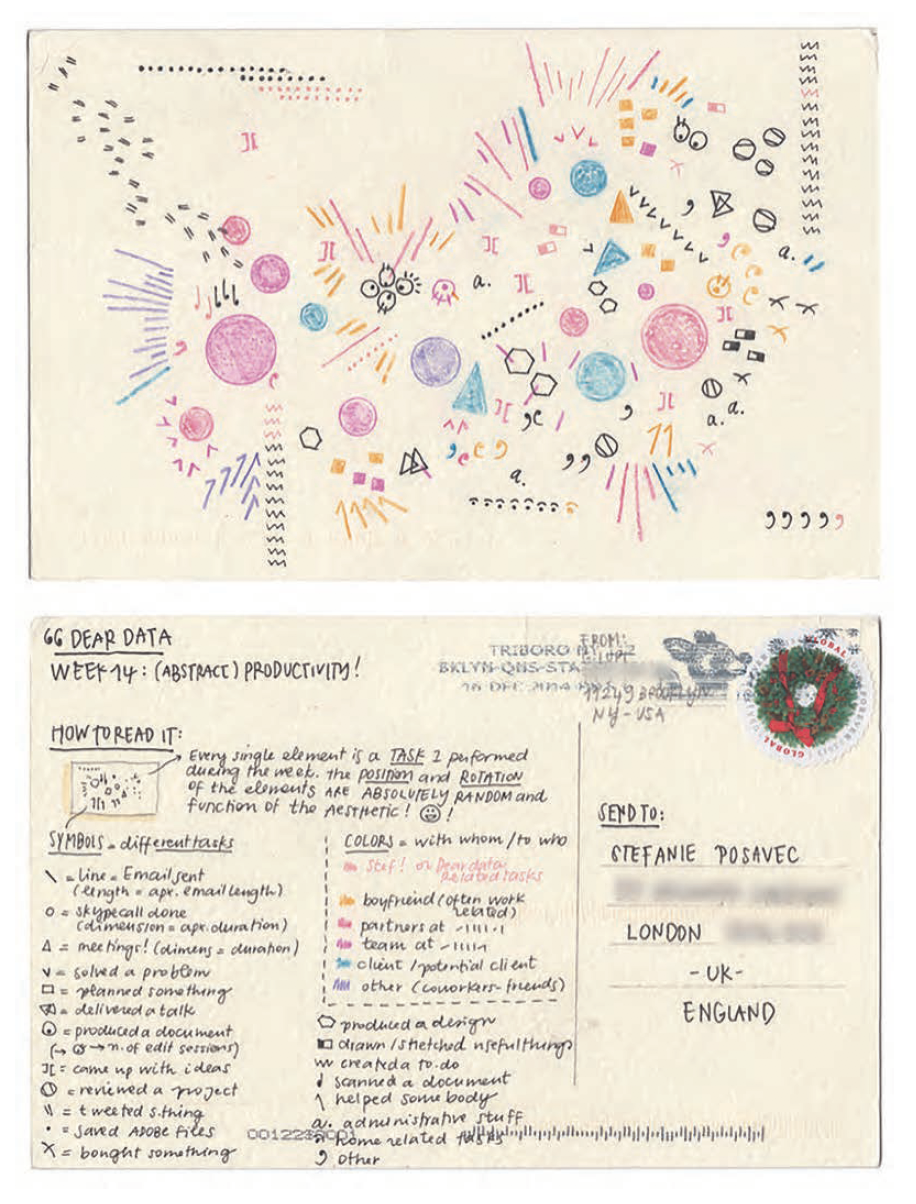 |
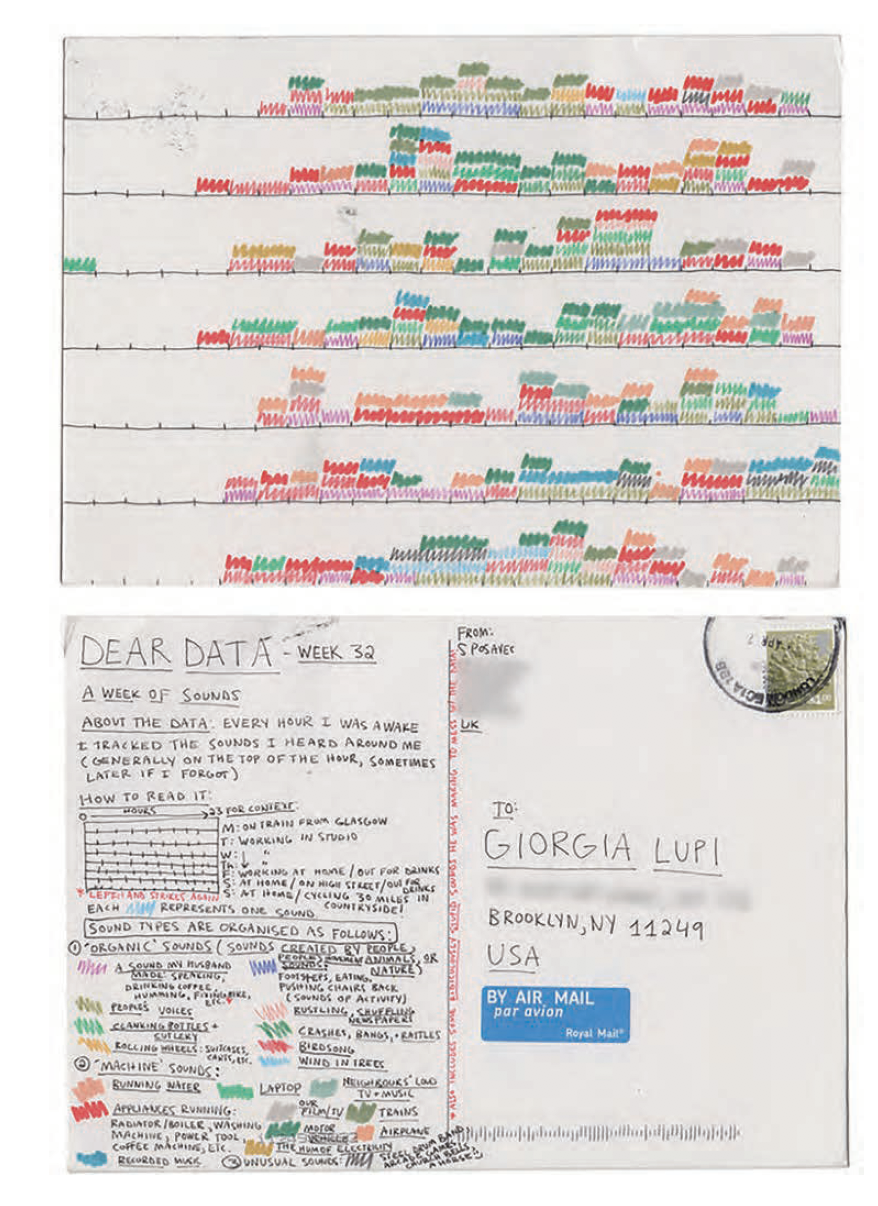 |
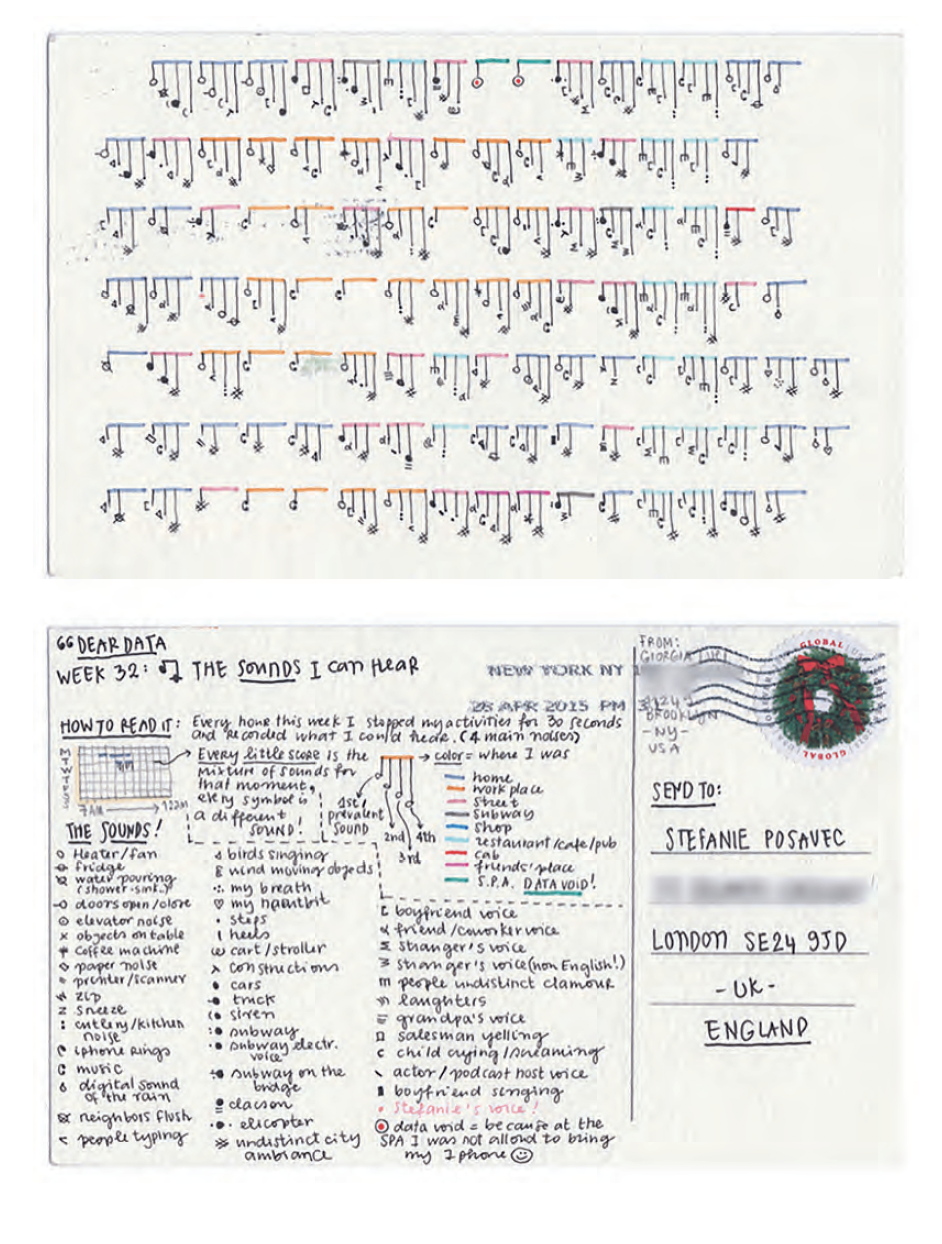 |
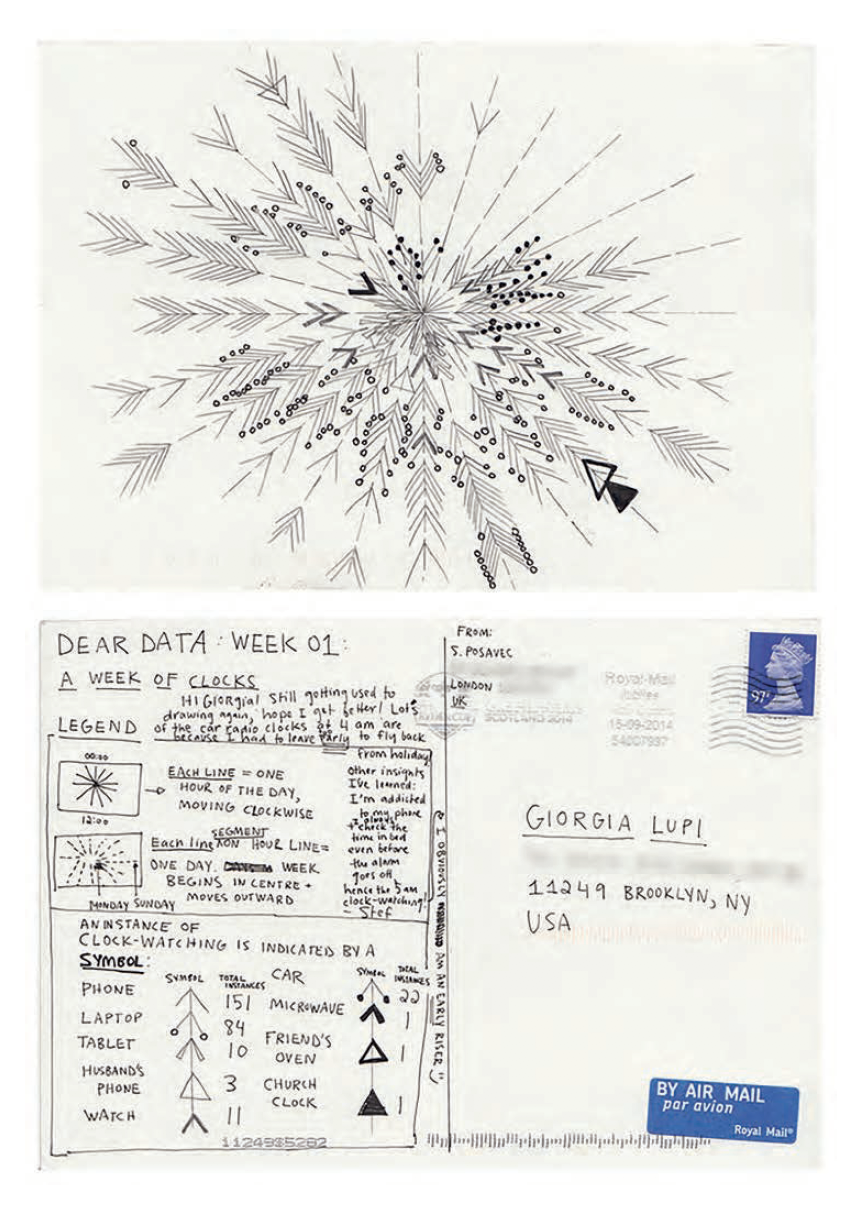 |
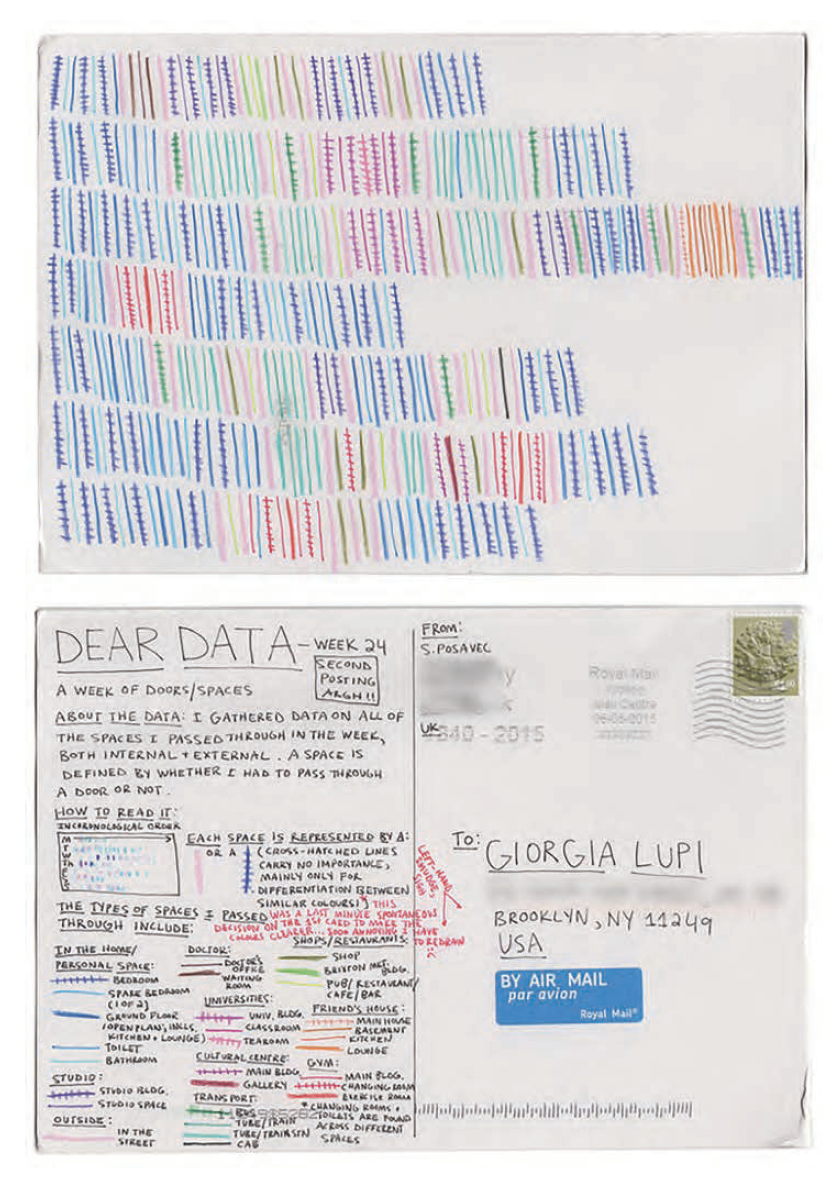 |
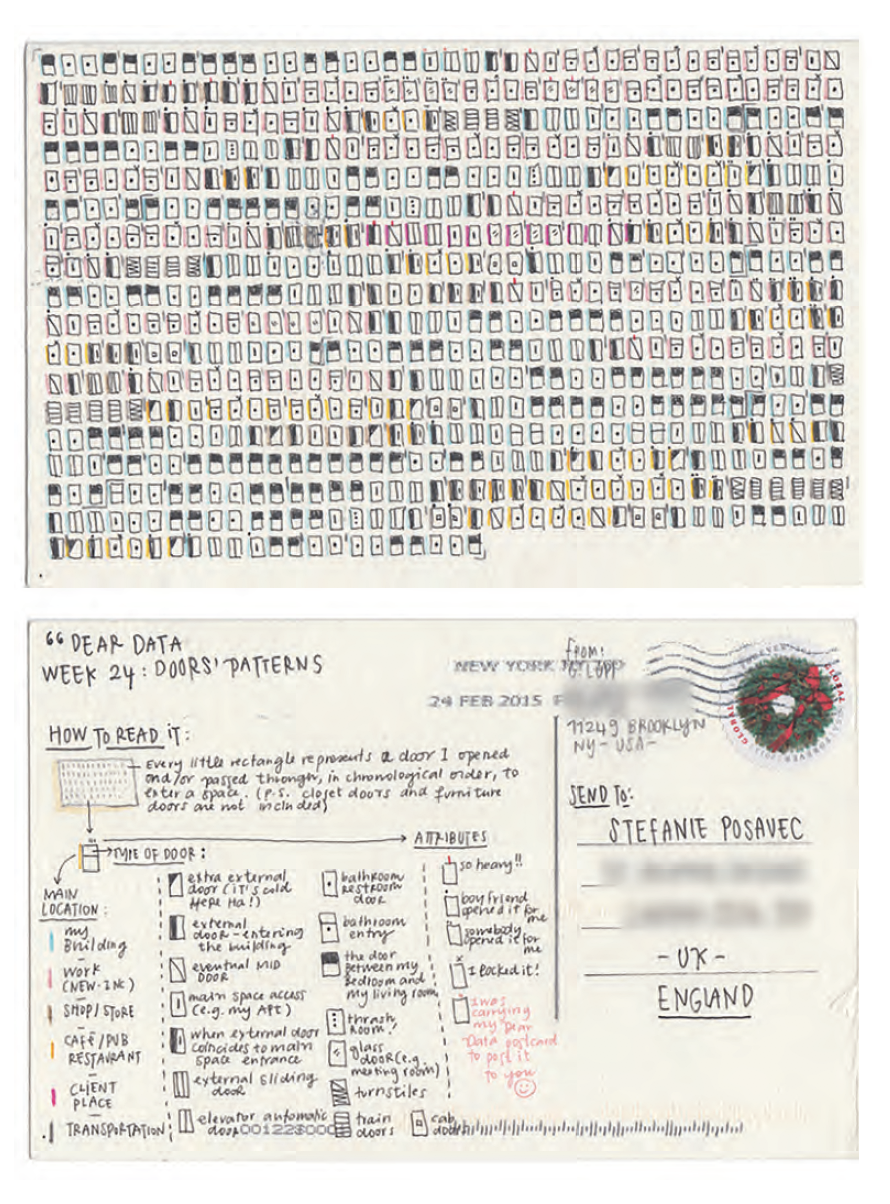 |
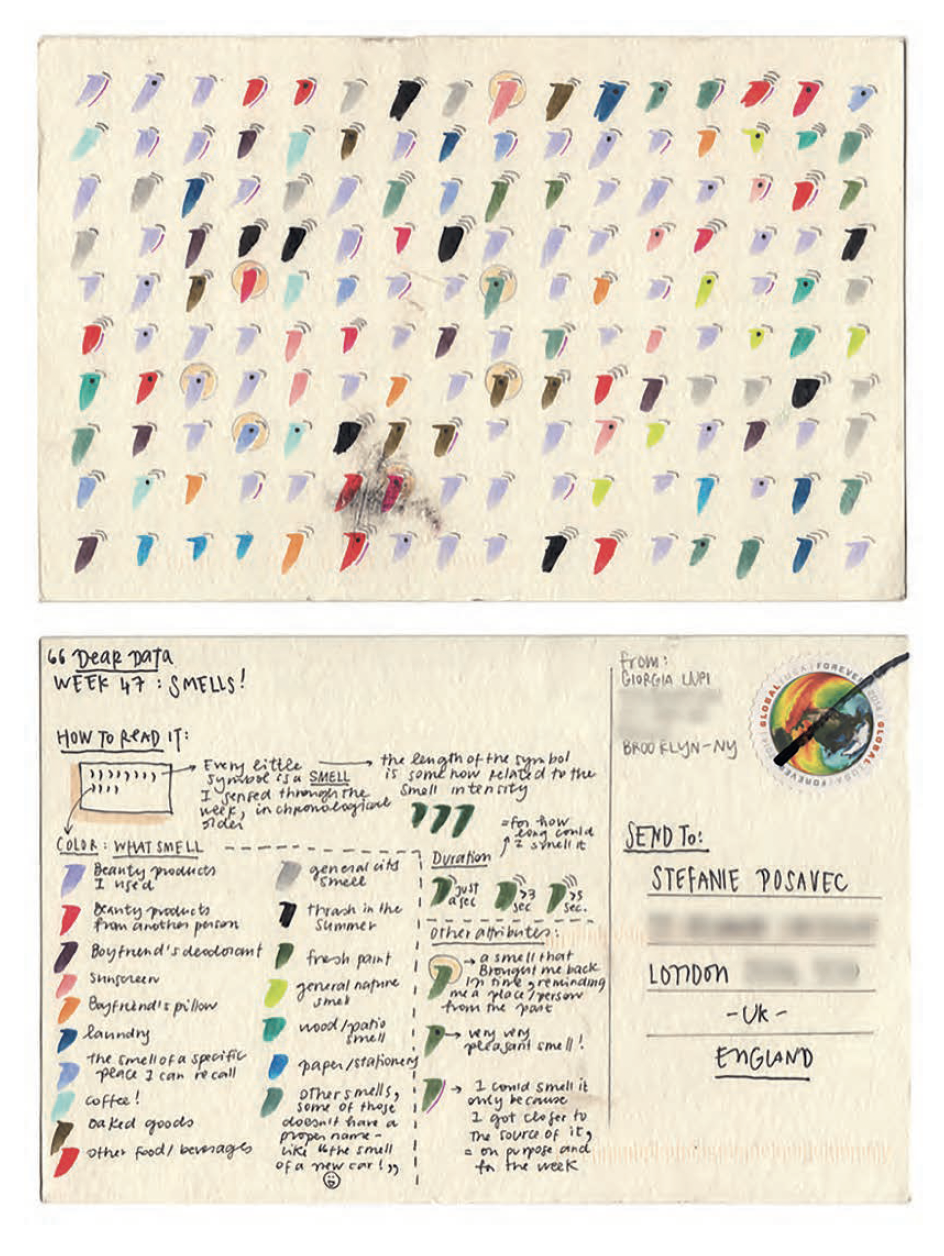 |
2 RELATED WORK
- “As the binary distinction between male and female, as well as the hierarchical relation that posits male above female, have been abstracted to serve as models for a range of structures and systems, feminist theory has been marshaled in order to challenge the validity of a variety of binaristic
 (source) and hierarchical
(source) and hierarchical 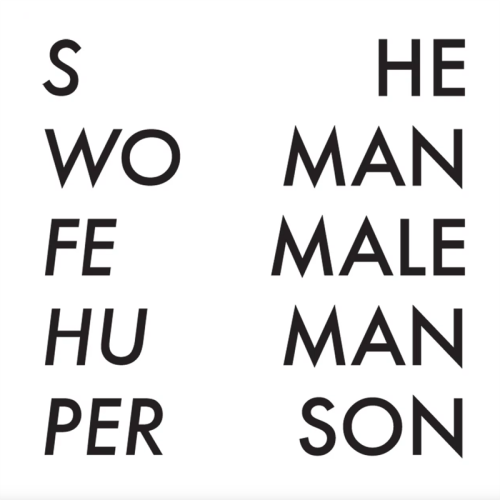 (source) configurations.
(source) configurations.
- how have the male/female binaries (and hierarchies) shaped many aspects of our lives, culture and society
- “traits traditionally seen as masculine (such as aggression and self-assuredness) are also seen as beneficial in the business world. Research suggests that these traditional views of masculinity have perpetuated bias and inequality in the economy, leading to “toxic masculinity.” Further, as we expand beyond the gender binary of male and female and push for equality among all genders, our understanding of masculinity, and its role in the economy, is shifting.” (source)
- By the same token, expansions of feminist theory – crucially, intersectional feminism – have been employed to overturn systems of oppression that cannot be reduced to a single structure or source.”
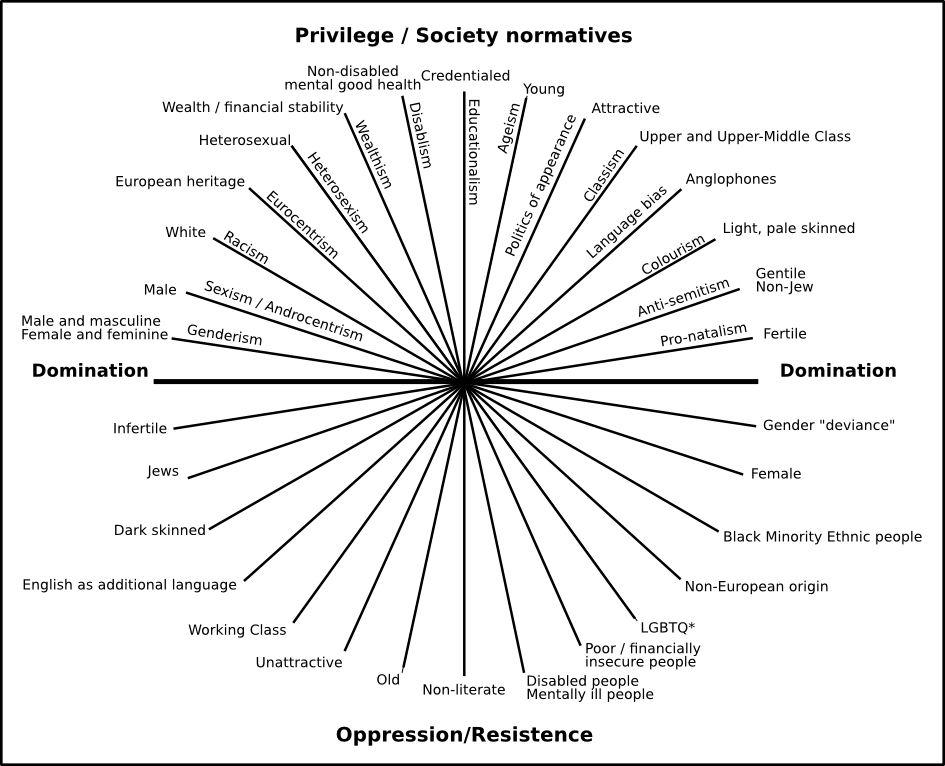 (source)
(source)
- “Intersectionality is a feminist theory, a methodology for research, and a springboard for a social justice action agenda. It starts from the premise that people live multiple, layered identities derived from social relations, history and the operation of structures of power. Intersectional analysis aims to reveal multiple identities, exposing the different types of discrimination and disadvantage that occur as a consequence of the combination of identities. It aims to address the manner in which racism, patriarchy, class oppression and other systems of discrimination create inequalities that structure the relative positions of women. It takes account of historical, social and political contexts and also recognises unique individual experiences resulting from the coming together of different types of identity.” (source)
2.1 Feminist Science and Technology Studies
- “Science and Technology Studies (STS) is an interdisciplinary field that emerged in the 1960s and 70s. STS examines the social, cultural, and historical aspects of science and technology.”
- “One of the key contributions of STS has been to challenge the idea that science and/or technology is objective and neutral by demonstrating how scientific thought is situated in particular cultural, historical, economic, and social systems.”
 (source)
(source) - “Feminist STS, both implicitly and explicitly, looks to the perspectives of those marginalized by current power configurations (including and especially those marginalized because of gender, sexuality, race, and/or ethnicity) as a way of exposing how their perspectives are not included in what is considered “objective” truth.” medicine | spatial thinking
2.2 Feminist Human-Computer Interaction
In both feminist HCI and critical information visualization, researchers have introduced design principles that attempt to draw attention to how knowledge resides in specific bodies (disclosure/self-disclosure, embodiment), how power is distributed throughout the design process (empowerment, advocacy, ecology) and how to include more voices and alternative perspectives in the design process, as well as the experience of the resulting artifact (participation, pluralism, plurality). 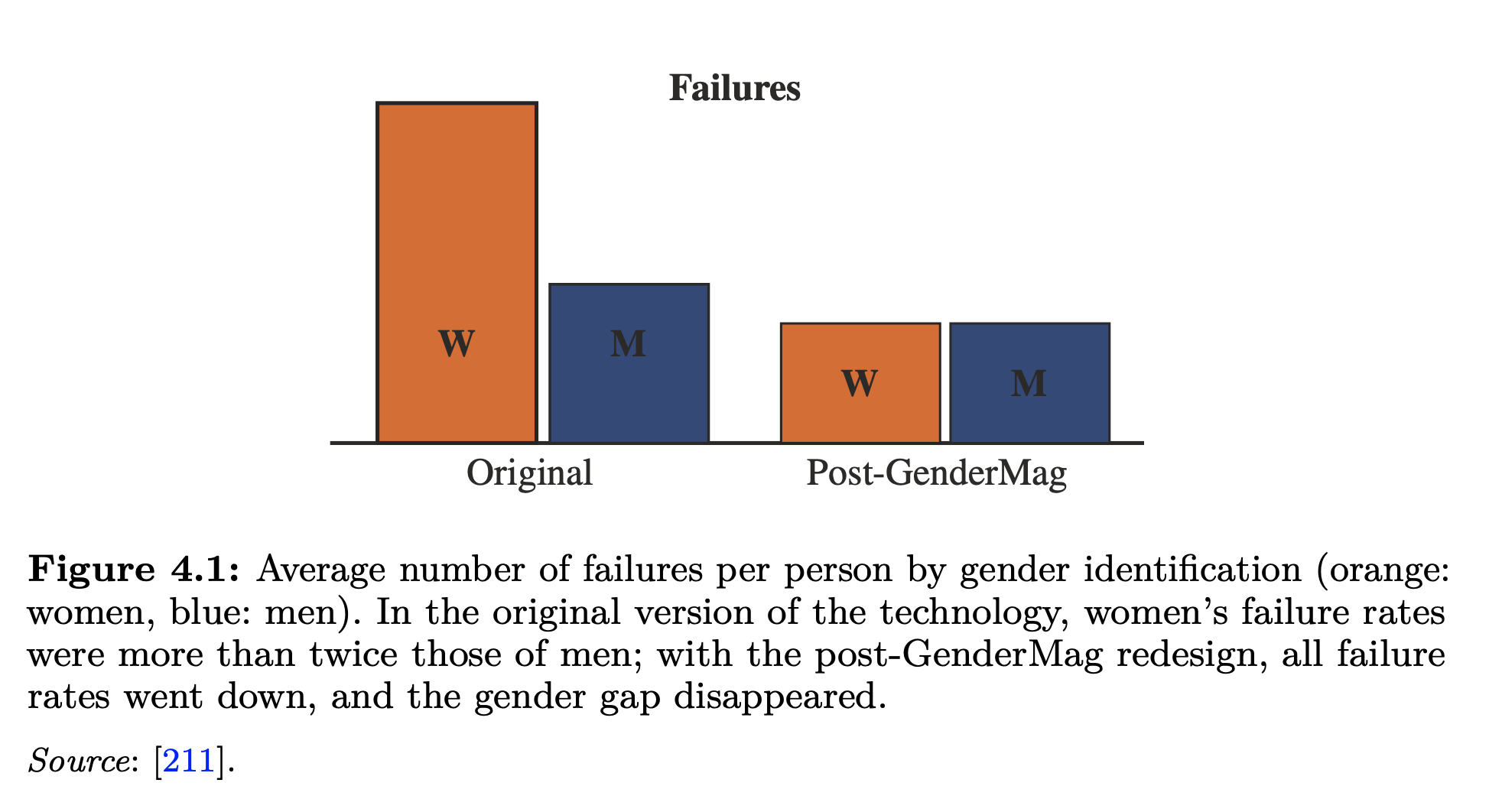 (source) |
(source) |  (source)
(source)
2.3 Feminist Digital Humanities
In terms of visualization work, gender – especially as it relates to issues of authorship and style – has long served as a subject of DH research, e.g. [46]. 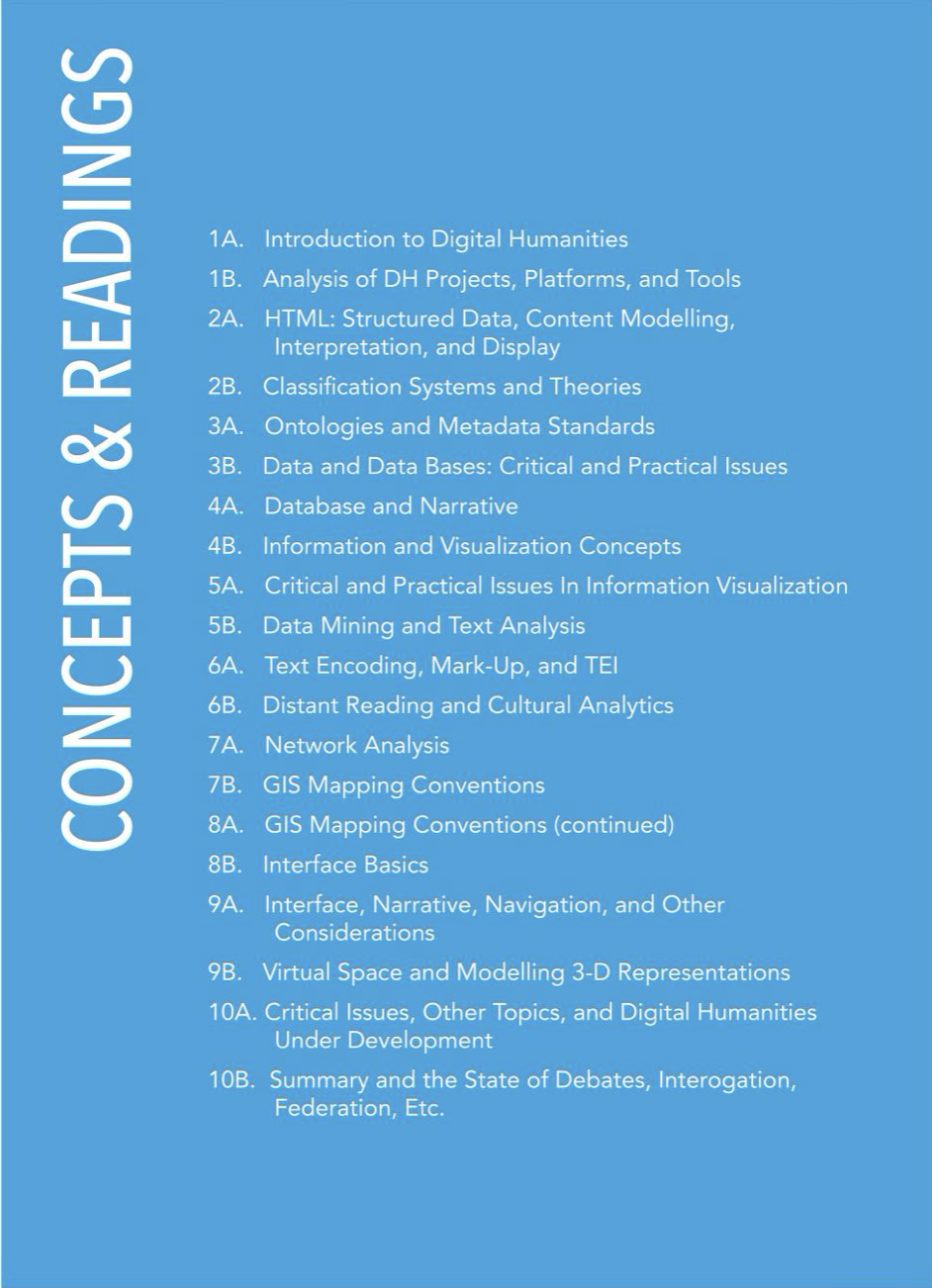 (source) However, the visualizations that accompany such analyses almost always employ standard representational techniques [45]. Recently, Miriam Posner [65] identified the development of new visual strategies for the representation of non-binary gender as one of the most pressing challenges of DH today.
(source) However, the visualizations that accompany such analyses almost always employ standard representational techniques [45]. Recently, Miriam Posner [65] identified the development of new visual strategies for the representation of non-binary gender as one of the most pressing challenges of DH today. 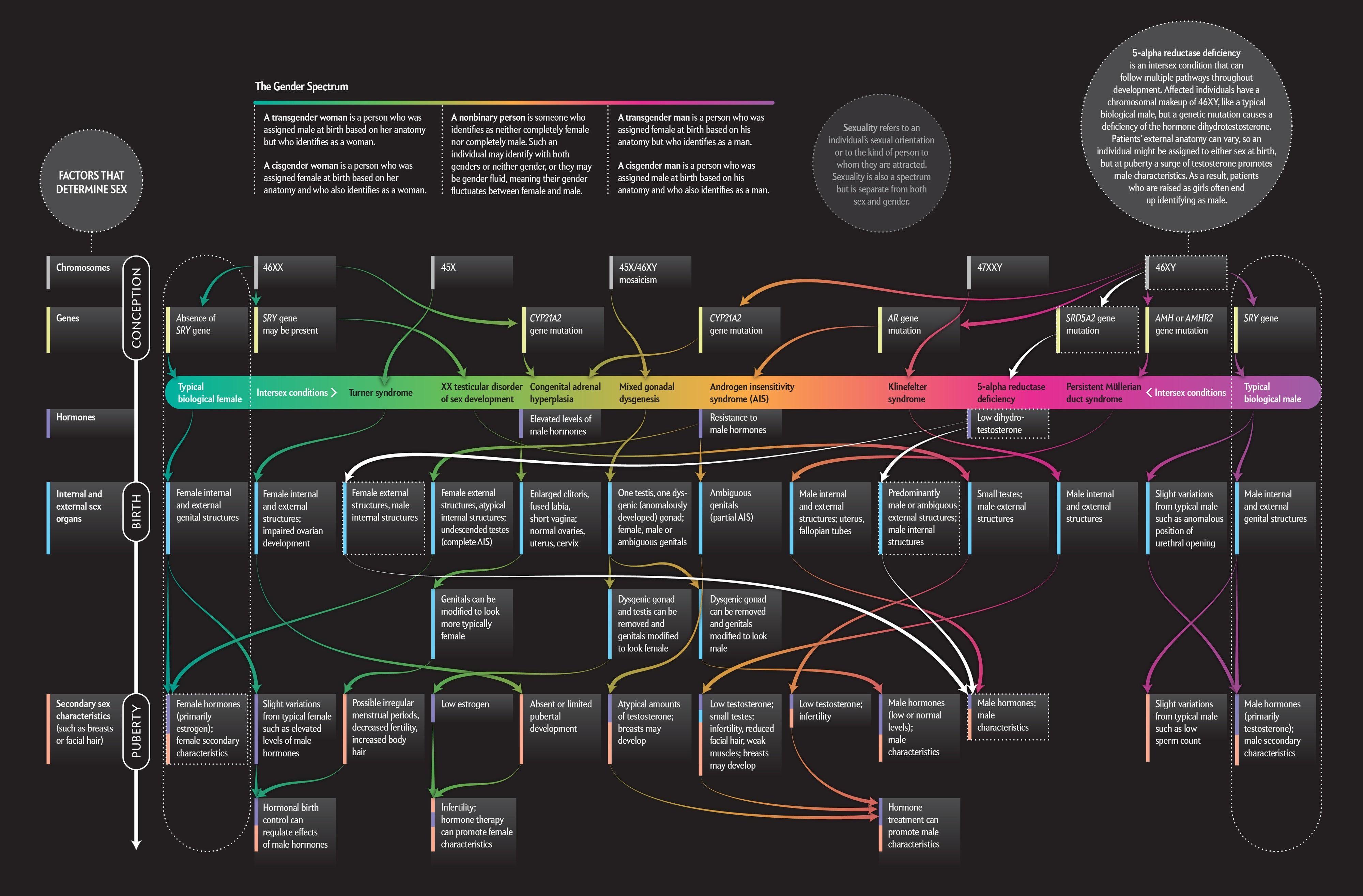 (source)
(source)
2.4 Critical Cartography & GIS
Cartographers such as JB Harley challenged the perceived neutrality of the map and introduced notions of ideology and bias [40, 41]. While he did not explicitly draw on feminist theory, Harley argued for the situatedness of maps as historically and culturally contingent documents. During the same period, Denis Wood connected maps explicitly to the rise of the nation-state and showed how maps serve political interests [82]. Other scholars linked Geographic Information Systems (GIS) to an impoverished techno-positivism [64] and militarism [71]. Subsequent scholarship theorized the map more as rhetorical proposition than depiction of “fact” [81]. 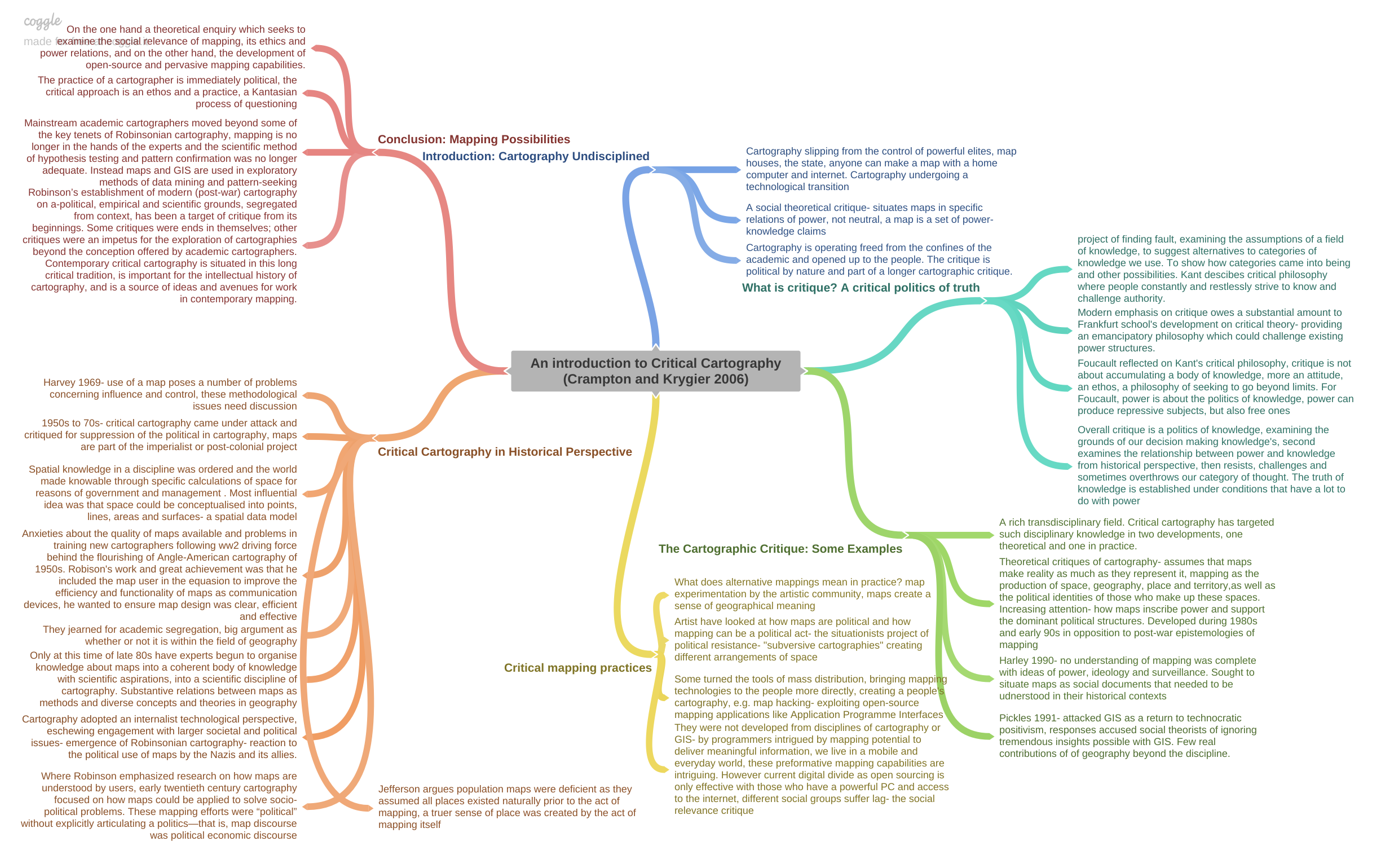 (source)
(source)
3 PRINCIPLES OF FEMINIST DATA VISUALIZATION3.1 Rethink Binaries
Central to feminist theory is the disavowal of binary distinctions– not only between the categories of male and female, but also between nature and culture [37], subject and object [43], reason and emotion [54], and body and world [4], among many others. A feminist approach to data visualization should therefore emphasize representational strategies premised on multiplicity rather than binaries, and acknowledge the limits of any binaristic view [53].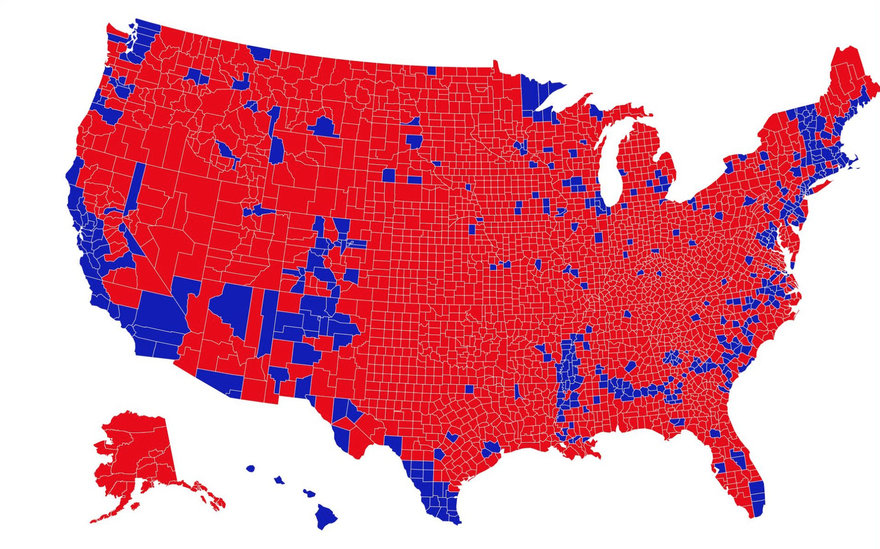
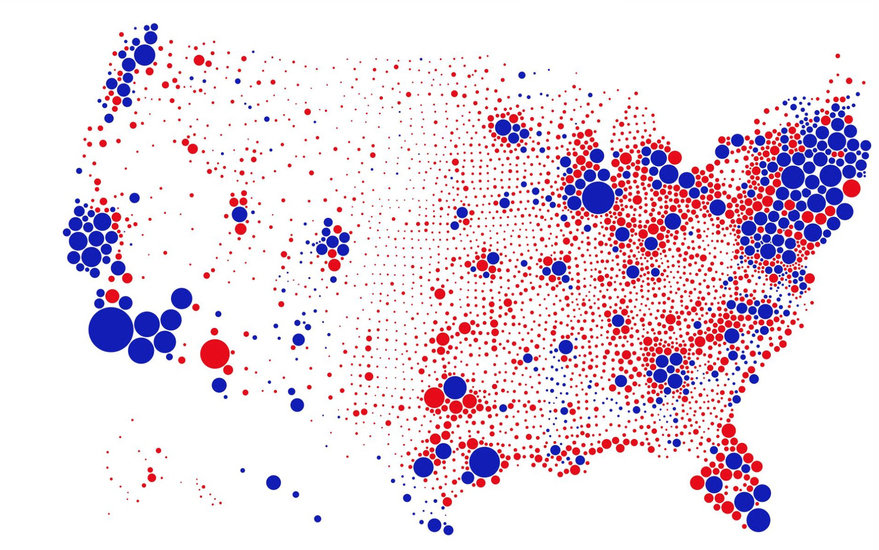
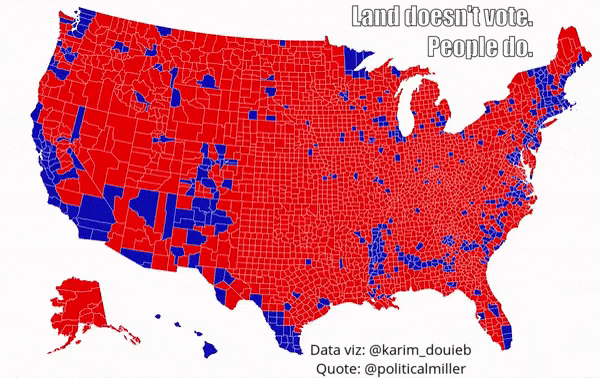 Revenge mapping: still polarized (source)
Revenge mapping: still polarized (source)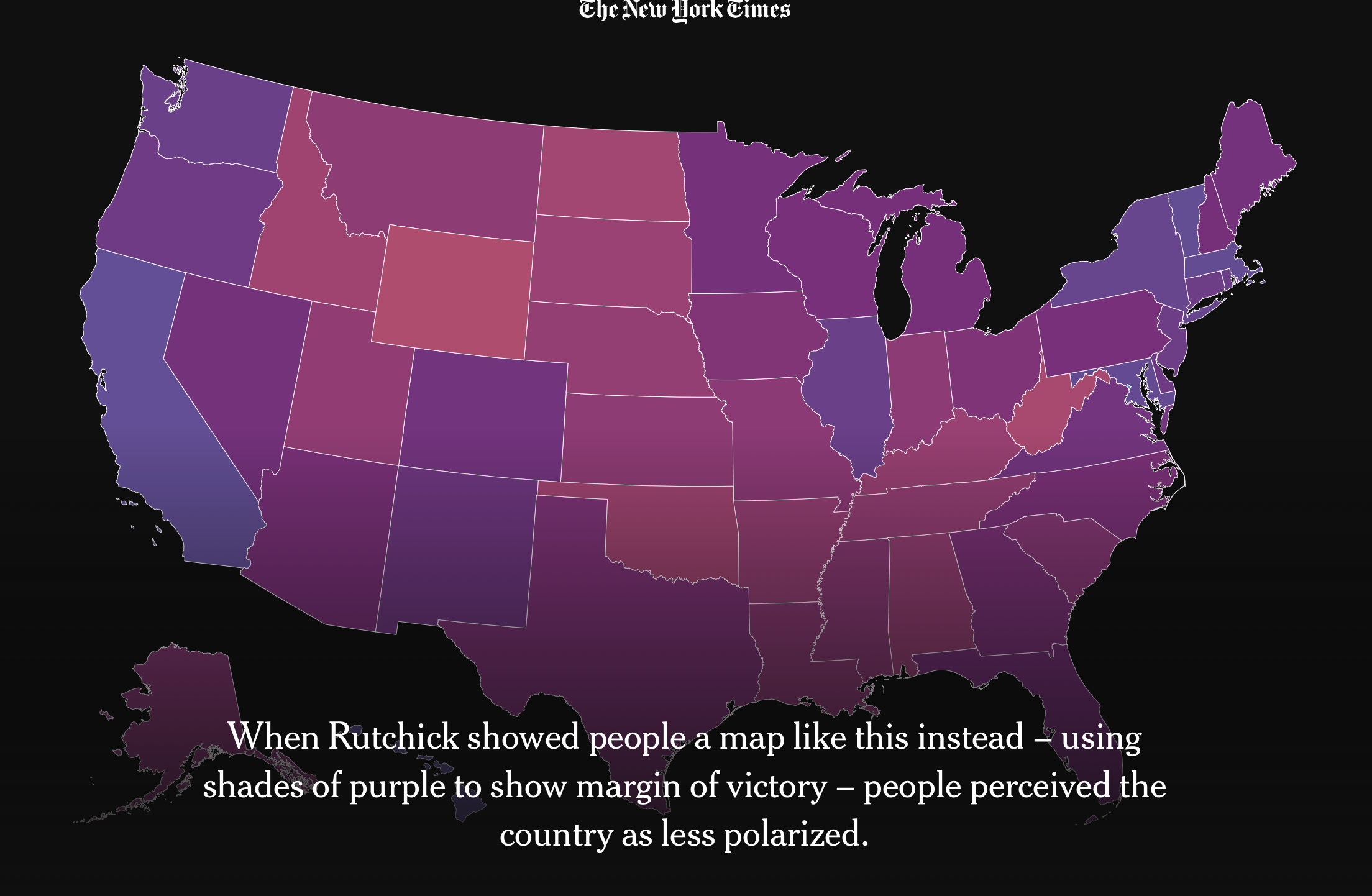 Red and blue and purple and polarization (source)
Red and blue and purple and polarization (source)
Not only a challenge for the visualization phase of research, rethinking the representation of gender, among other binaristic categories, challenges us to inquire how the processes associated with data collection and classification, as well as their visual display, might be made to better account for a range of multiple and fluid categories.
Design Process Questions: Is our data the right type? What categories have we taken for granted? How can we register responses that do not fit into the categories we have provided, even and especially if they are “edge cases” and “outliers”?Design Output Questions: How do we communicate the limits of our categories in the final representation? How can we allow the user to refactor the categories we have presented for view?
3.2 Embrace Pluralism
Feminist theory seeks to challenge claims of objectivity, neutrality and universalism, emphasizing instead how knowledge is always constructed within the context of a specific subject position [8, 38, 39, 54]. 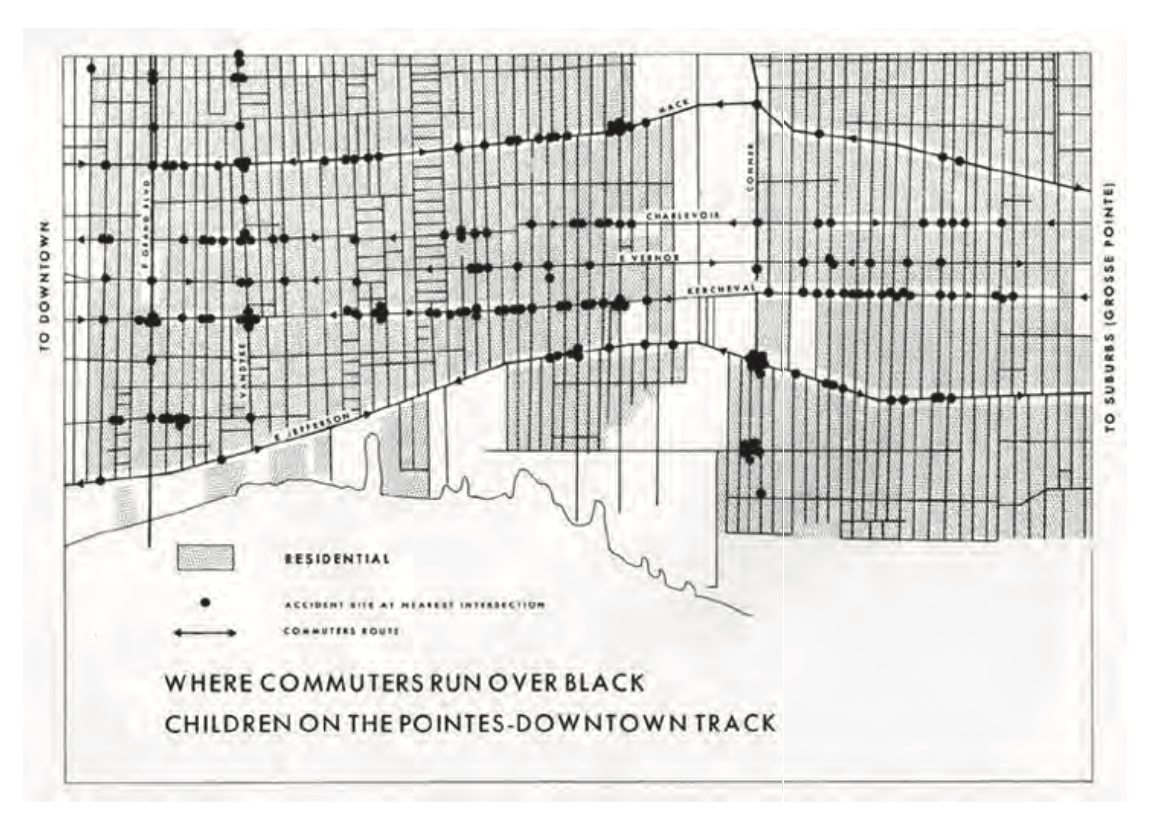 (source) In the context of data visualization, a focus on the designer’s own subject position can help to expose the decisions, both implicit and explicit, that contribute to the creation of any particular visual display.
(source) In the context of data visualization, a focus on the designer’s own subject position can help to expose the decisions, both implicit and explicit, that contribute to the creation of any particular visual display.
Ideally, a focus on pluralism would help visualization research move away from its current emphasis on “objective” presentation in favor of designs that facilitate pathways to multiple truths. 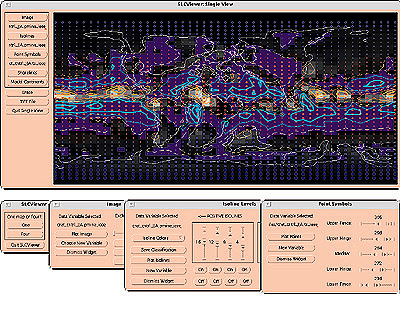 (source)
(source)
Design Output Questions: Can the artifact communicate the subject positions of the researcher(s) and designer(s) in a transparent way? Whose view of the world does the visualization represent?  &
& 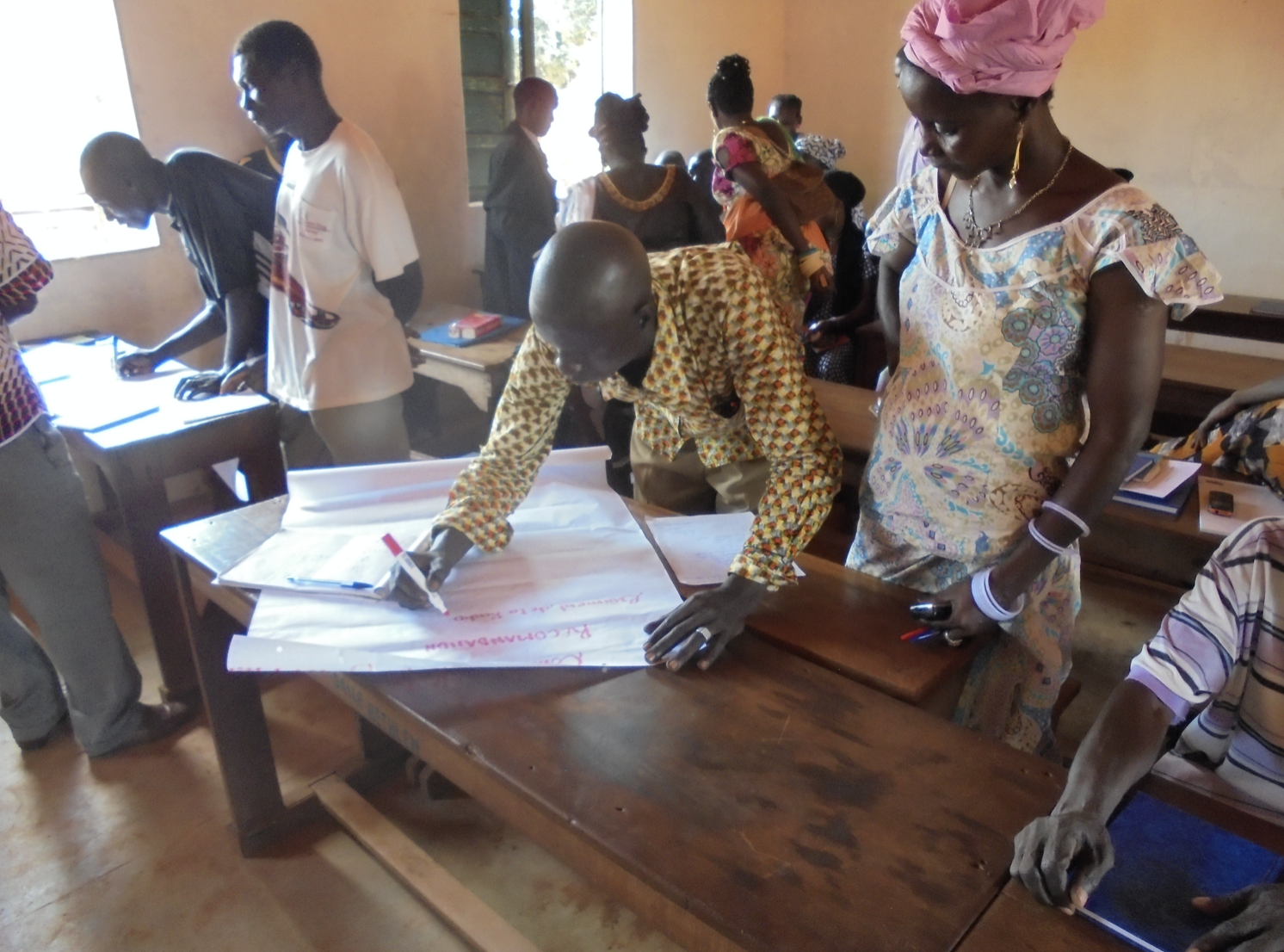 (source) Can the visualization communicate whose voices are missing?
(source) Can the visualization communicate whose voices are missing? 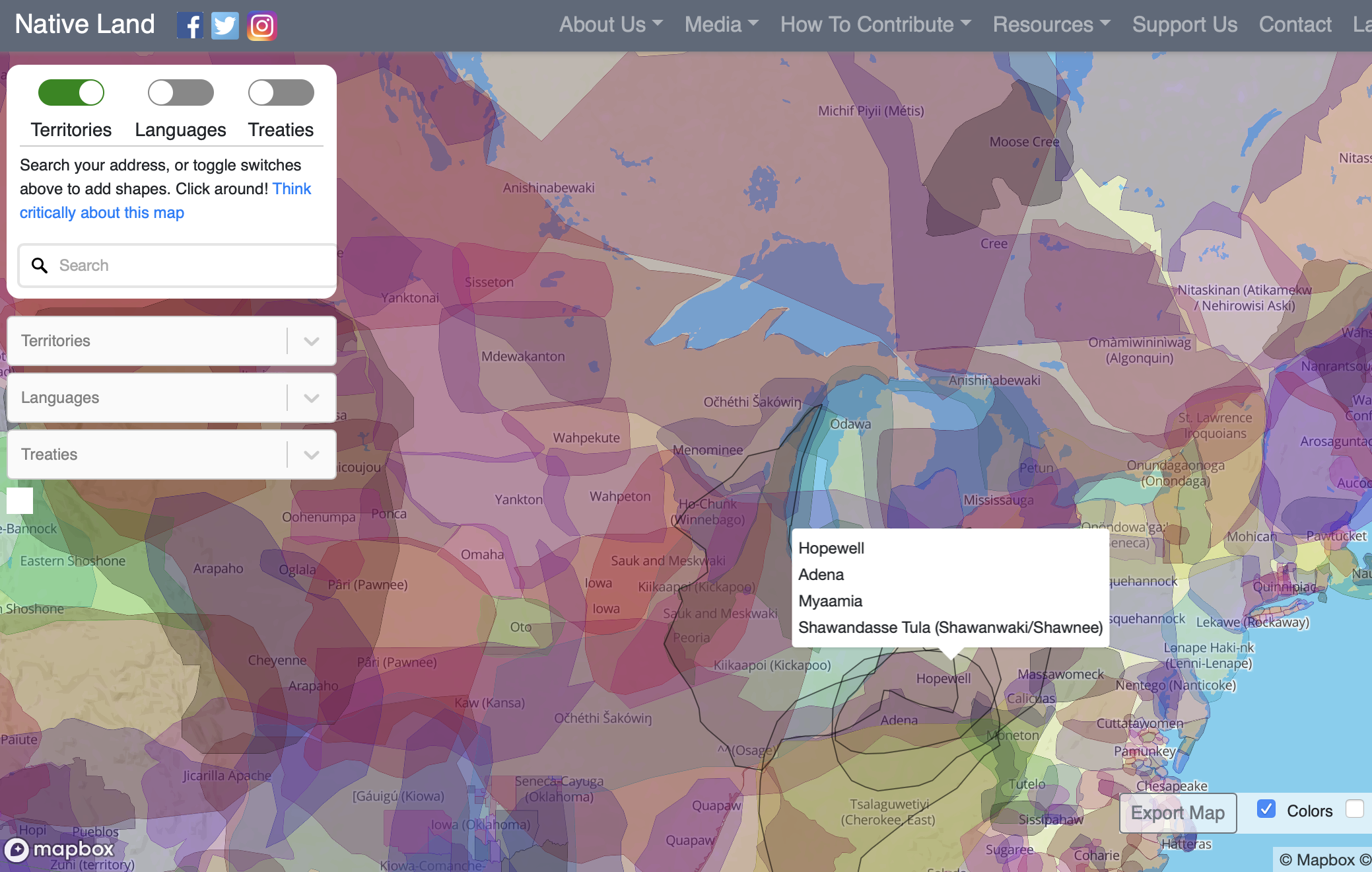 (source). Could perspective-taking be a useful strategy to consider for multiple views on the data?
(source). Could perspective-taking be a useful strategy to consider for multiple views on the data?
3.3 Examine Power and Aspire to Empowerment
A feminist approach to data visualization therefore acknowledges the user as a source of knowledge in the design as well as the reception of any visual interface. The creation of knowledge is, after all, always a shared endeavor.
Aspiring to empowerment, then, may involve designing for and evaluating the success of a visualization at the scale of the community rather than the individual user.
Design Process Questions: How is power distributed across the design team? Whose voice matters more and why? How can end-users’ voices be more fully integrated into the design process? Can we build capacity in user communities, or enlarge our internal perspectives, by employing a more participatory design process?Design Output Questions: Can the visualization empower the end-user and/or her community, group, or organization? 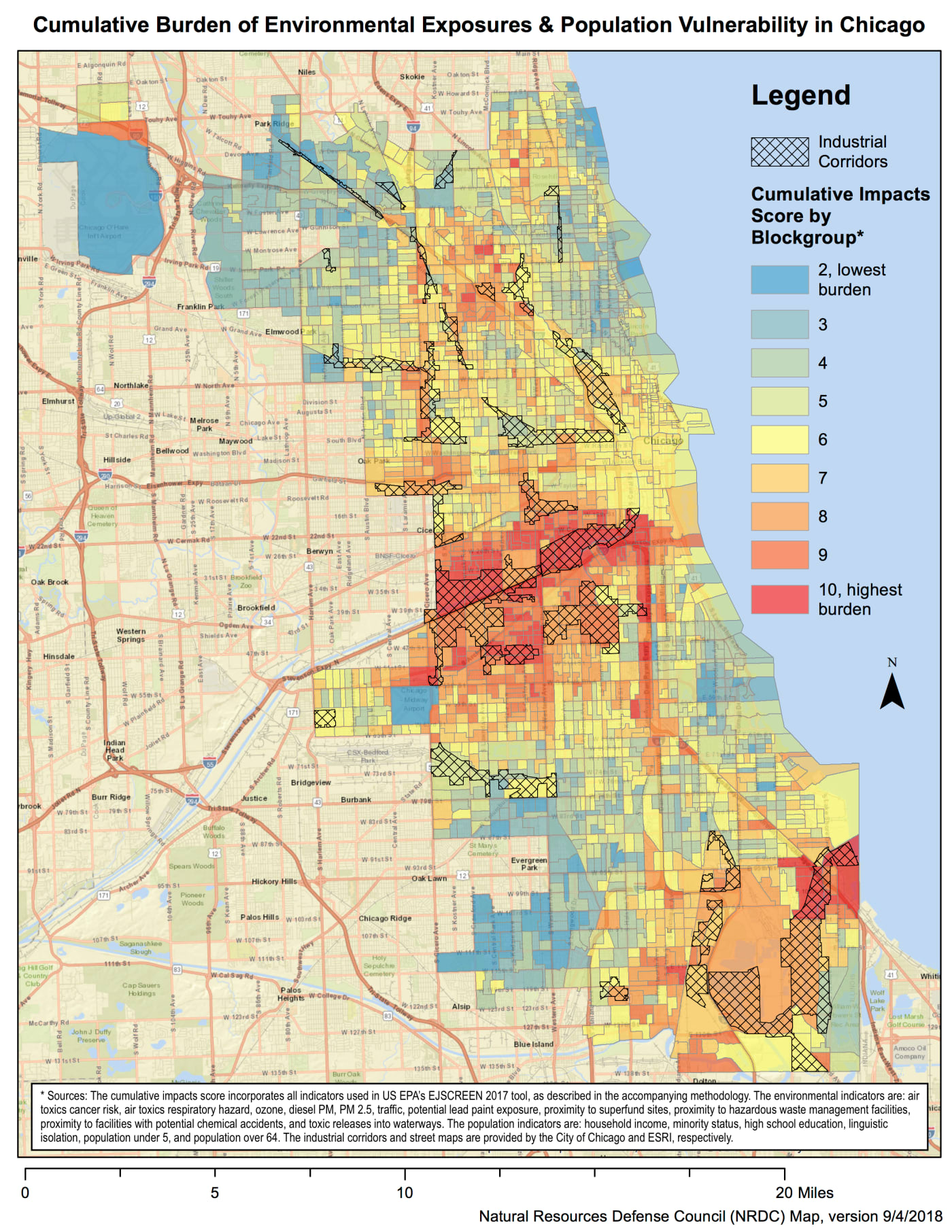 (source) &
(source) & 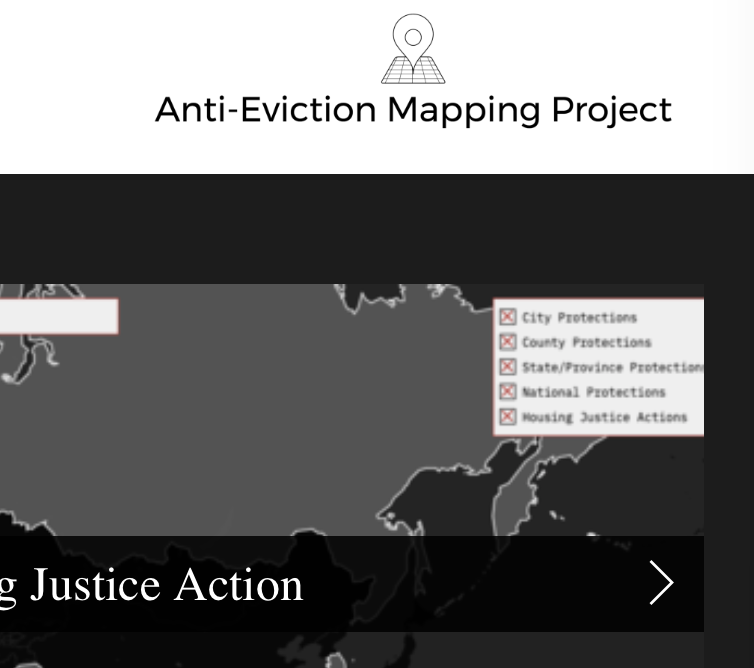 (source). When do values often assumed to be a social good, such as “choice,” “openness,” or “access,” result in disempowerment instead?
(source). When do values often assumed to be a social good, such as “choice,” “openness,” or “access,” result in disempowerment instead?
3.4 Consider Context
A central premise of feminist theory is that all knowledge is situated [36], where “situated” refers to the particular social, cultural, and material context in which that knowledge is produced [33]. A feminist approach to data visualization must therefore consider how diverse contexts can influence the production of a visualization, and think through the various ways in which any particular visualization output might be received. 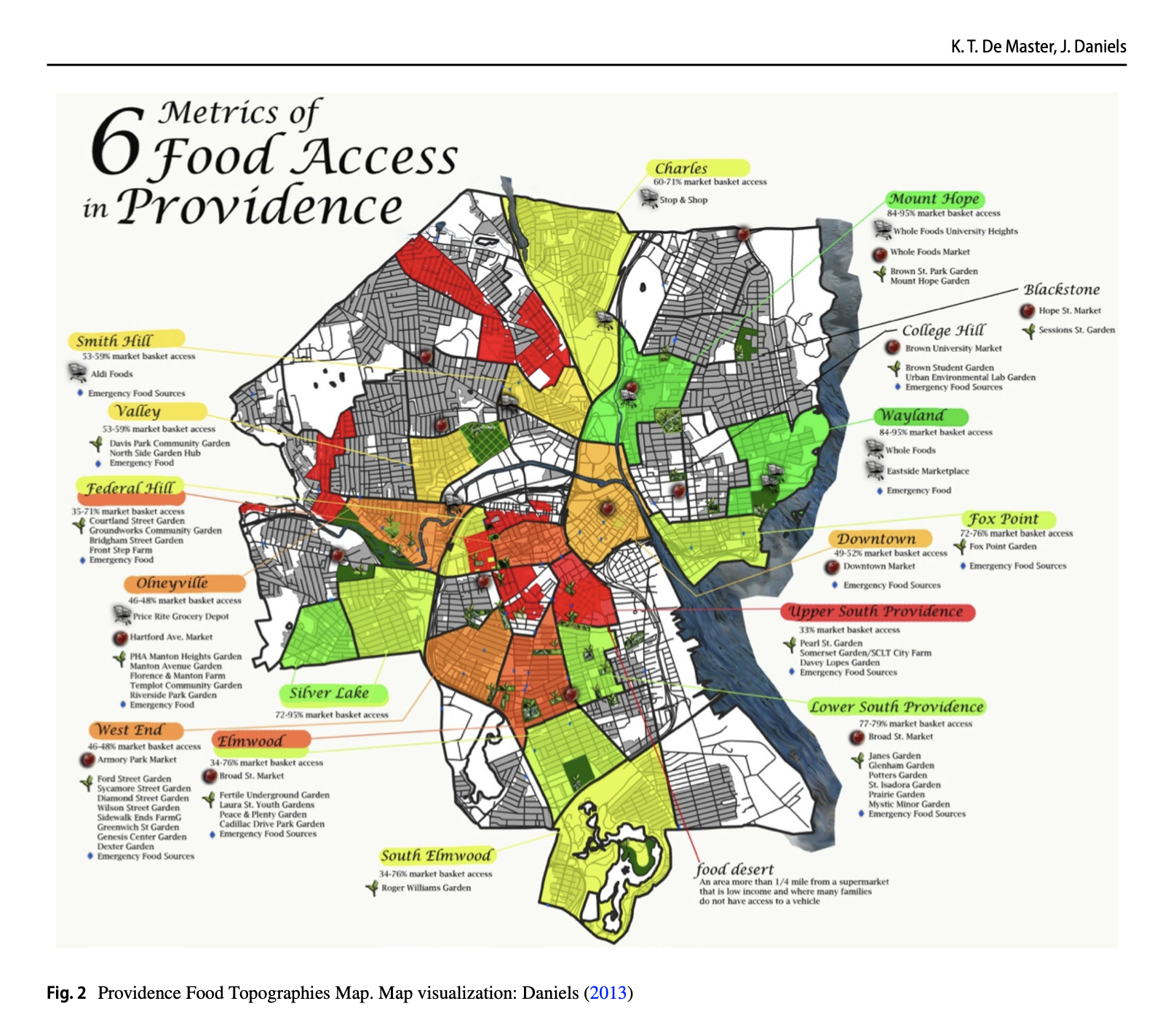 (source)
(source)
Design Process Questions: How can we leverage human-centered design [14] and participatory design [72] methods to learn about and with our end-users, including learning more about their culture, history, circumstances, and worldviews? How can we let these insights shape our design practice and change our notions about what constitutes “good” information design?
Design Output Questions: What kinds of terminology, symbols, and cultural artifacts have meaning to end-users, and how can we incorporate those into our designs? What might we learn if we were to visualize “messy” data [68]? How do we take context into account in the assessment of visualizations?
3.5 Legitimize Embodiment and Affect
Feminist theory recognizes embodied and affective experiences – that is, experiences that derive from sensation and emotion – as ways of knowing on par with more quantitative methods of knowing and experiencing the world [13].  (source). By definition, visualization rests on the production and assimilation of visual knowledge. But even the most efficiency-oriented and task-driven visualizations have embodied and affective impact, if only to communicate their utility, economy, and purposefulness by way of the visual domain.
(source). By definition, visualization rests on the production and assimilation of visual knowledge. But even the most efficiency-oriented and task-driven visualizations have embodied and affective impact, if only to communicate their utility, economy, and purposefulness by way of the visual domain.
Design Process Questions: How can we leverage embodied and affective experience to enhance visualization design and engage users? 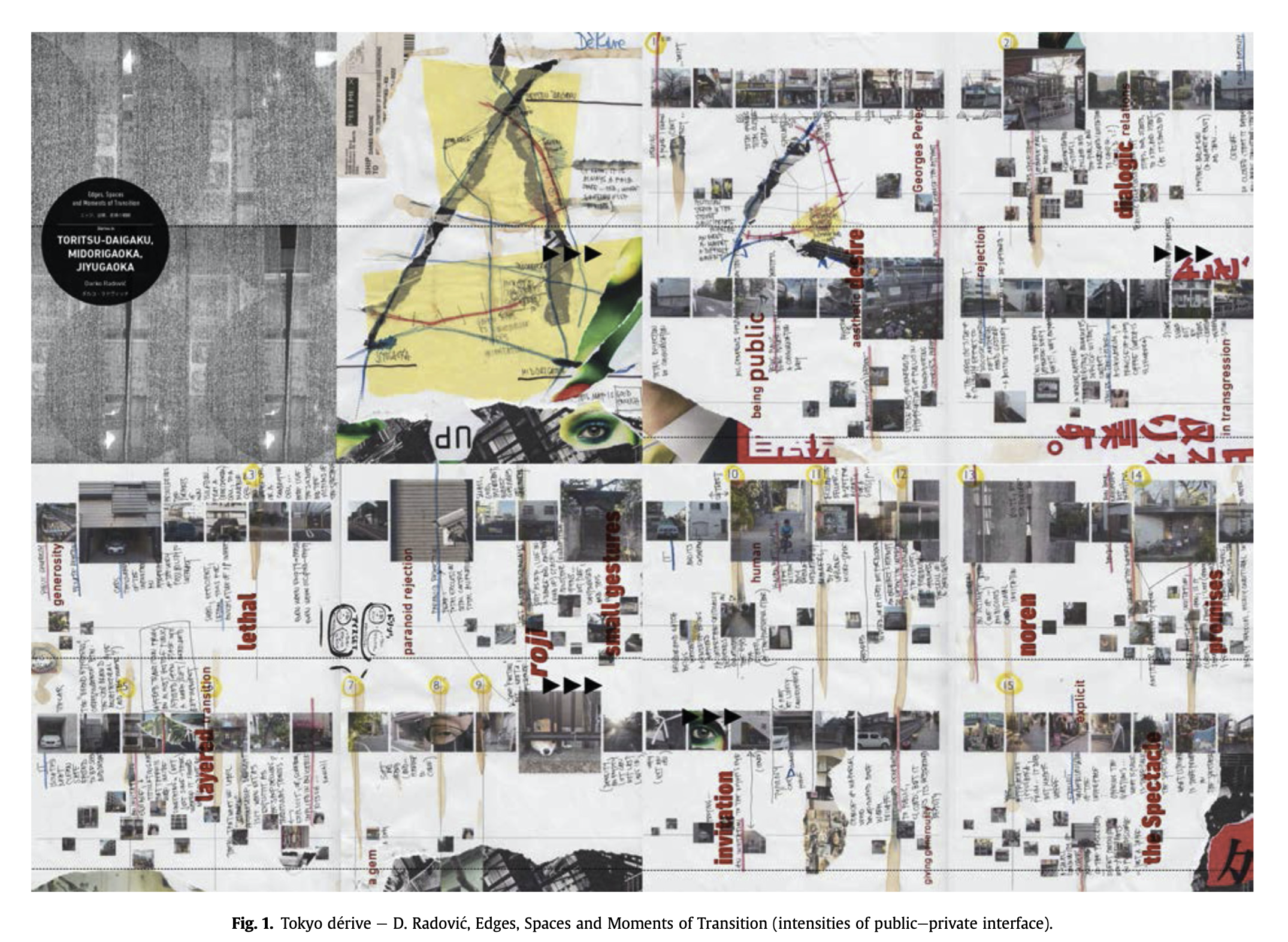 (source) &
(source) & 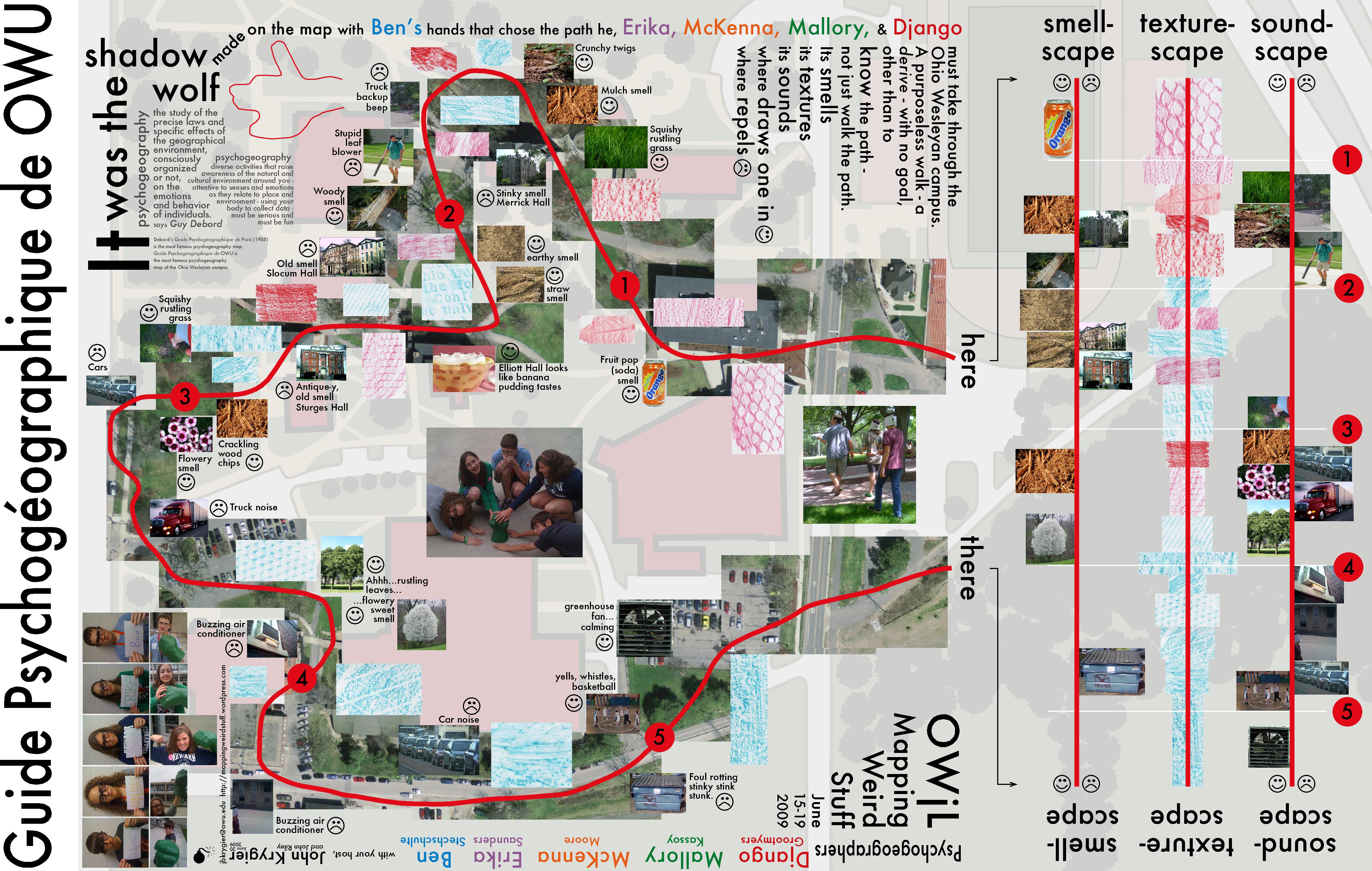 (source). What kinds of expertise might we need on our design team in order to do that? (e.g. fine art, graphic design, animation, or communication specialists)Design Output Questions: What kinds of embodied and affective experience has meaning to end-users? Should we consider tactile, experiential, or social ways of accessing the data visualization? Can we consider visualization outputs in an expanded field, such as data murals [7], data sculptures [1], public walks [2], quilts [48] and installations [63]?
(source). What kinds of expertise might we need on our design team in order to do that? (e.g. fine art, graphic design, animation, or communication specialists)Design Output Questions: What kinds of embodied and affective experience has meaning to end-users? Should we consider tactile, experiential, or social ways of accessing the data visualization? Can we consider visualization outputs in an expanded field, such as data murals [7], data sculptures [1], public walks [2], quilts [48] and installations [63]?
3.6 Make Labor Visible
Information design processes often start with data, but a feminist approach would insist that they begin by working backwards to surface the actors (both individual and institutional) that have labored to generate a particular dataset.
Design Process Questions: Can the team work backwards from the given data to document their provenance and talk to their caregivers? Has the team discussed roles, responsibilities, and credit in advance of publication? Design Output Questions: Is it feasible to provide a metadata visualization that shows the provenance of the data and their stakeholders (caregivers) at each step? Have we properly attributed work on the project?
